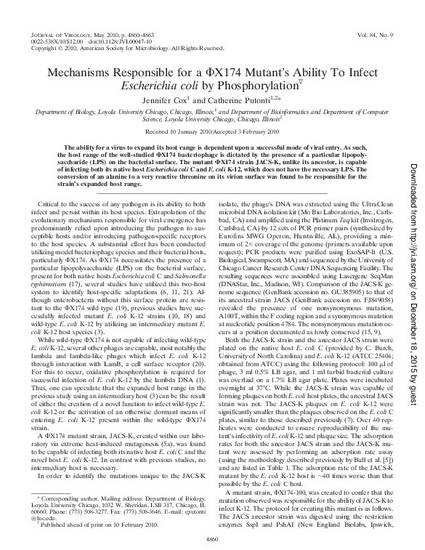
Article
Mechanisms Responsible for a ΦX174 Mutant's Ability To Infect Escherichia coli by Phosphorylation
Journal of Virology
Document Type
Article
Publication Date
1-1-2010
Pages
4860–4863
Publisher Name
American Society for Microbiology
Disciplines
Abstract
The ability for a virus to expand its host range is dependent upon a successful mode of viral entry. As such, the host range of the well-studied ΦX174 bacteriophage is dictated by the presence of a particular lipopolysaccharide (LPS) on the bacterial surface. The mutant ΦX174 strain JACS-K, unlike its ancestor, is capable of infecting both its native host Escherichia coli C and E. coli K-12, which does not have the necessary LPS. The conversion of an alanine to a very reactive threonine on its virion surface was found to be responsible for the strain's expanded host range.
Creative Commons License
Creative Commons Attribution-Noncommercial-No Derivative Works 3.0
Copyright Statement
© American Society for Microbiology, 2010.
Citation Information
Cox, J and C Putonti. "Mechanisms Responsible for a ΦX174 Mutant's Ability To Infect Escherichia coli by Phosphorylation." Journal of Virology 84(9), 2010.

Author Posting. © American Society for Microbiology, 2010. This article is posted here by permission of the American Society for Microbiology for personal use, not for redistribution. The article was published in Journal of Virology, Volume 84, Issue 9, 2010, http://dx.doi.org/10.1128/JVI.00047-10